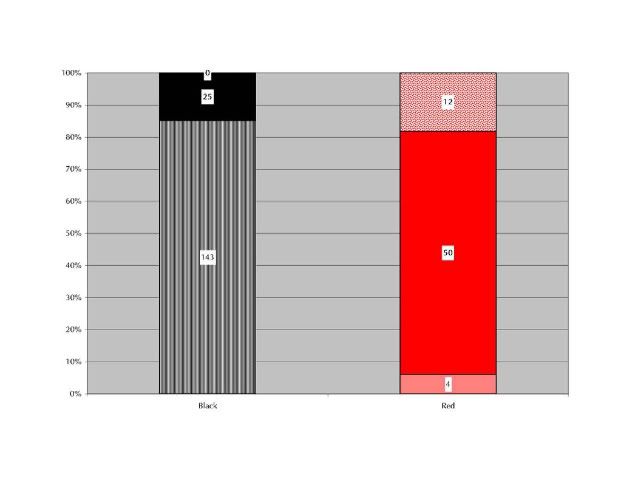Jorge wrote:As per the traditional "roan" phenotype seen in various Catch A Bird's descendants, apparently there is no question that all of these sported darker head, darker points, and mixed white hairs, with no whitening-out with age. In synthesis, they all betrayed the well-known visual characteristics of a genuine "roan" ("R" gene) equine. Whether they were truly carrying the "roan" ("R" gene) that's another story since I am not aware is DNA tests were performed. But for me, if the aforementioned visual characteristics are present, (let's say, like hearing a "quack" from a duck) then the case must be labeled as "roan". I have been following these cases with much interest.
I thought it would be interesting to point something out (that I had wondered about during the discussion, but just now was able to check.)
The True Roan gene in horses as been narrowed down to a location. It is in the KIT gene (along with Tobiano, SB1, and Dominant White at least.)
What is interesting about that is that KIT is in a linkage group with extension, the gene that causes a horse to be either red or black based. What that means is MOST of the time KIT and Extension will pass TOGETHER.
Let me bring out an example to make this a bit more understandable.
Take for example this (stallion is Ee TOto) His E and TO are linked and his e and to are linked.
The black bar is black based horses and the red bar is red based horses.
The solid parts are solid horses.
The striped parts are tobiano horses
The checkered parts are "overo"

(Roughly)
He has six horses that are red tobianos and one horse who is a bay solid.
You then have 103 horses who are black based tobianos.
And 56 red solids.
Roan and extension should have the same linkage because roan is also in KIT. However when we look at Slip Catch it does not (though its possible that her one foal is a "cross over" so to say, its unlikely.)
Slip Catch is a supposed bay roan who is heterozygous for this roan gene. If it was the same roan as the original it should connect to either her E or her e.
However she then goes to produce a bay roan and a red roan by the same chestnut stallion. This means that she had to have passed BOTH E and Roan and e and Roan.
While it is possible that one is a linkage cross over I found this bit interesting. I will be doing a little more research tonight and see if I can find anything with the information I have, or can find.
Color do you happen to know where those photos were taken? Or by who? Or when? Or any information that might get me more information on this family of roans?


